12/1/2017
Running Low on Resources
Jennifer Zurko
This past September, the U.S. Department of Labor came out with data from a study they conducted showing there were 6.17 million job openings that employers could not fill. As of November, that number had not changed. And as most of you already know, many of those are in the agriculture/horticulture sector. (Schools and hospitals have the most job openings, with 1.2 million.)
As we’ve reported in these pages during the past few years, there are many reasons for this disparity, but the No. 1 reason we hear most often is just a lack of “good” workers to fill those positions. Our industry also has strong competition for workers with construction and manufacturing companies, who together posted 613,000 job openings this year. Combine those two things with less available seasonal migrant labor and it makes for employers working leaner, paying more overtime and working more hours themselves.
With the lack of a labor force front and center in the minds of our readers, for the last question of our survey we asked, “Are you experiencing a labor shortage, and if you are, what are some of the things you've been doing to handle the lack of resources?”
We had lots of responses, admittedly with some saying they weren’t having a problem finding workers. But those numbers were small. Most of the people who took our survey said they indeed were having a difficult time finding labor and that they’ve had to come up with some creative ways to fill the gaps. Many said they were hiring more refugees and non-Hispanic foreign workers; others mentioned they’re investing in more automation or have increased their wages; some have decided to try the H-2A program; and a few in states that have legalized it respondents said they’re losing good people to cannabis growers.
Here are some of the responses:
“Finding good help is difficult, especially if you're only open seasonally. We find that treating employees well and with kindness works well to encourage return employees. Word gets around in our community when a place treats others with respect. We work with what we have and have automated when we can (flat filler, automatic transplanter, seed). We've also increased our signage to help with customer service.”
“Using volunteers a lot, friends, working too much.”
“Everyone works long hours.”
“Try to recruit people who are retired or retiring shortly; willing to pay above minimum wage to start.”
“Growing less, working longer hours.”
“We advertise locally, via social media and through government websites.”
“Hiring less skilled and training more.”
“We are looking at different ways to find employees either on social media, online resume posting sites, etc.”
“We are in contact with a community action board—a recruiter for the county.”
“I am searching harder for employees, adding employees so we can make a split schedule to get Sunday covered.”
“Quality seasonal personnel are becoming harder to find. We are settling for college students who can’t work the full season.”
“We've been having difficulty filling our seasonal staff. We've been reaching out to technical high schools and have had some high school students as interns and as co-op students.”
“Employing landscaping employees during winter months.”
“Our business is switching to H-2A guest workers next year to avoid paying the ridiculous payroll taxes here in New York.”
“Paying my employees more per hour.”
“Very difficult to get new employees, but once we have new ones, they stay. Increase of wages, benefits and flexible hours all help to retain employees.”
“We've beefed up our training program.”
“Allowing overtime to interested employees and broadening the advertising of our listings.”
“We’ve been lucky in 2017. We hired a few young laborers we had to pay a better starting wage, more overtime and meet their needs to make them successful. Hopefully, long-term employees.”
“Trying to be more efficient mechanizing.”
“We have been increasing our starting rate for several years, but the real problem that we are having is finding youth that is willing to do manual labor (and show up regularly). 2018 will be our last year without foreign labor.”
“We share labor with other farmers.”
“We are employing more refugees with the help of the local Catholic Social Services office.”
“Temp agency has been able to supply seasonal needs. Challenges come in retaining employees that we want back year after year, but don't have enough work to keep them going December to February.”
“It has been a struggle to get and keep seasonal employees with greenhouse or nursery experience due to marijuana growers paying more. Dividing up more watering needs and tasks, cross training as much as possible and getting everyone involved in decisions when possible.”
“We hire temporary or seasonal general laborers from parking lots of Home Depot and hardware stores.”
“Matching or surpassing wages offered by chains, including restaurants.”
“Use head hunters.”
“The labor shortage has prompted us to raise wages and minimize expansion into new markets.”
“Implemented Lean Flow.”
“We work with other seasonal businesses—pumpkin farm, potato farm, Christmas store—to share seasonal employees. It works well for everyone. The businesses find seasonal employees that want to work and the employees like the variation.”
“Increasing our recruiting budget to sponsor ads on Indeed; target recruiting toward social media.”
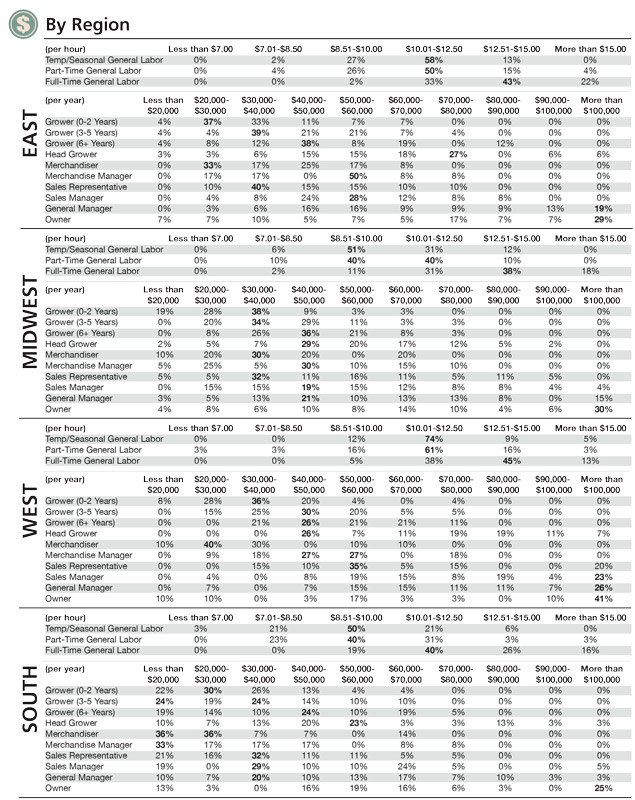
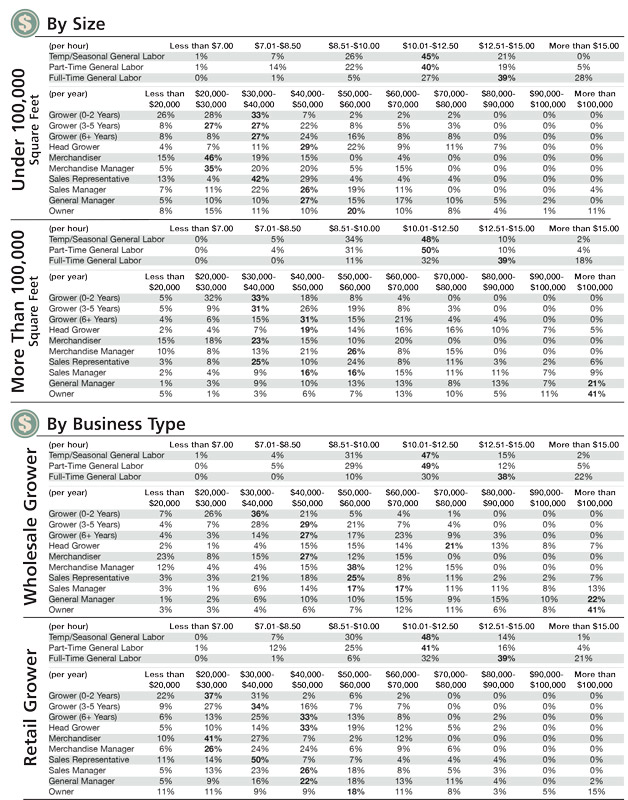
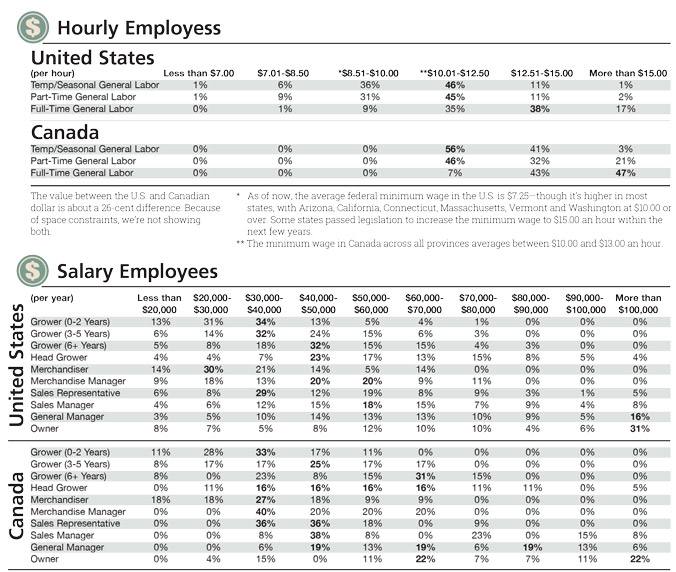
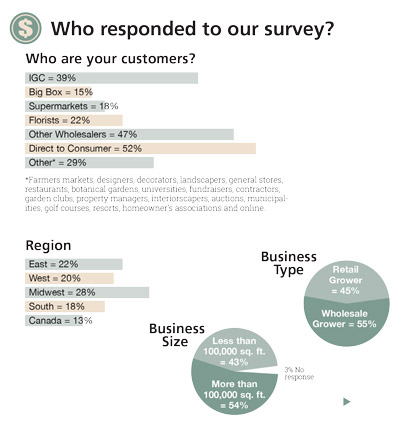
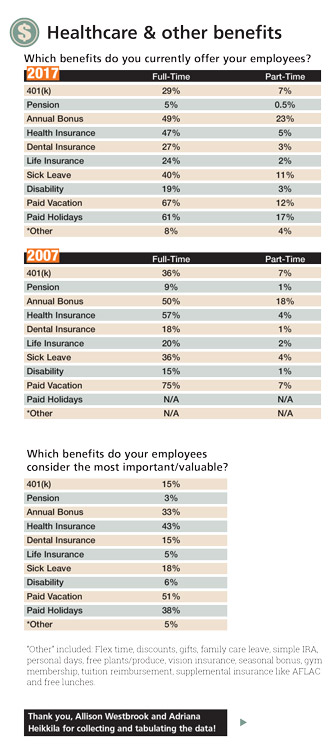
And you’re hiring
As part of our survey, we’ve always asked what growers hiring plans were for the year and compared the current year’s numbers to the previous five to six years. When we crunched the numbers and saw the total of how many planned on adding more staff, we were curious to see how it measured up to even farther back, going more than a decade. What this year’s data showed us is that the number of growers hiring is the highest it’s been in over 12 years.
It’s an interesting statistic in that it shows that our industry is doing above-average—at least, well enough that you’re hiring—which would normally be a good thing. But with the current worker shortage, it’s caused added stress to business owners and managers across our industry … but has also caused them to be more creative when trying to figure out ways to get the work done.
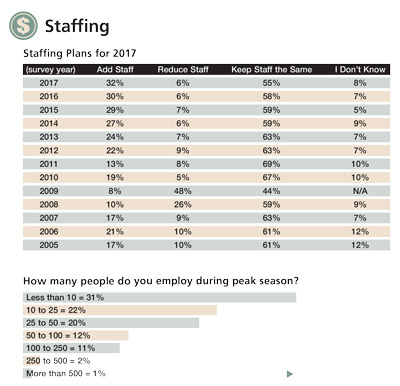
Hiring the Key Employee
By Bob Zahra
What’s more disruptive and difficult than hiring a key employee? The temptation is to cut corners in the hiring process: to seriously consider the unqualified and the unhappy, to be “sold” an individual who’s on the market rather than to bear down and expend precious time to identify, approach and secure the best possible candidate.
With a plate full of other problems, it's deceptively tempting for the hiring authority to “just fill the slot” and move on to the next problem—even though it’s clear that the properly positioned key employee is the foundation upon which the successful company is built. The most successful business decisions are made in the context of the furthest timeline. An easy, but marginal, hire today may necessitate a termination and re-hire when least tolerable.
The company rises on the shoulders of the key employee. It only makes sense to select that key employee carefully. It’s a mistake to be “sold” an individual, either by the candidate or by the candidate’s advocate. The individual’s proven history is available, both in terms of work history and character. Although increasingly more difficult legally to ascertain, degrees can be verified. Criminal records, driving records and sexual offender profiles all can be checked.
Instead of doing the hard work of approaching directly the individual who’s truly qualified, who can improve their own family’s circumstances plus bring decades of significant strategic value to the hiring company, the easy way out is to hire someone who’s available, with whom you have “good chemistry”—even though the truth is (and always has been) that you’ll learn to “like” the person who delivers for you in superior fashion, while “good chemistry” fizzles in the face of non-performance.
Our industry is a small town internationally. There are few people who have the proven, demonstrated qualifications required. Everybody knows everybody. The real challenge isn’t identification of the candidate; it’s shepherding the understandably cautious candidate from first contact through family reluctance, confidentiality concerns, cold feet, multiple interviews, background investigation, negotiations relative to offer, counter-offer from current employer, relocation hurdles, family adjustment, and on and on.
Cast a cold eye on personal chemistry. Give more credence to proven history. Don’t be “sold” whomever is available. Select the person who can best contribute to the long-term success of your company.
Bob Zahra is an executive search consultant with Florasearch, Inc., a certified personnel consultant and past chair of the National Association of Executive Recruiters. He can be reached at (407) 320-8177 or
bzahra@florasearch.com. Please visit www.florasearch.com.